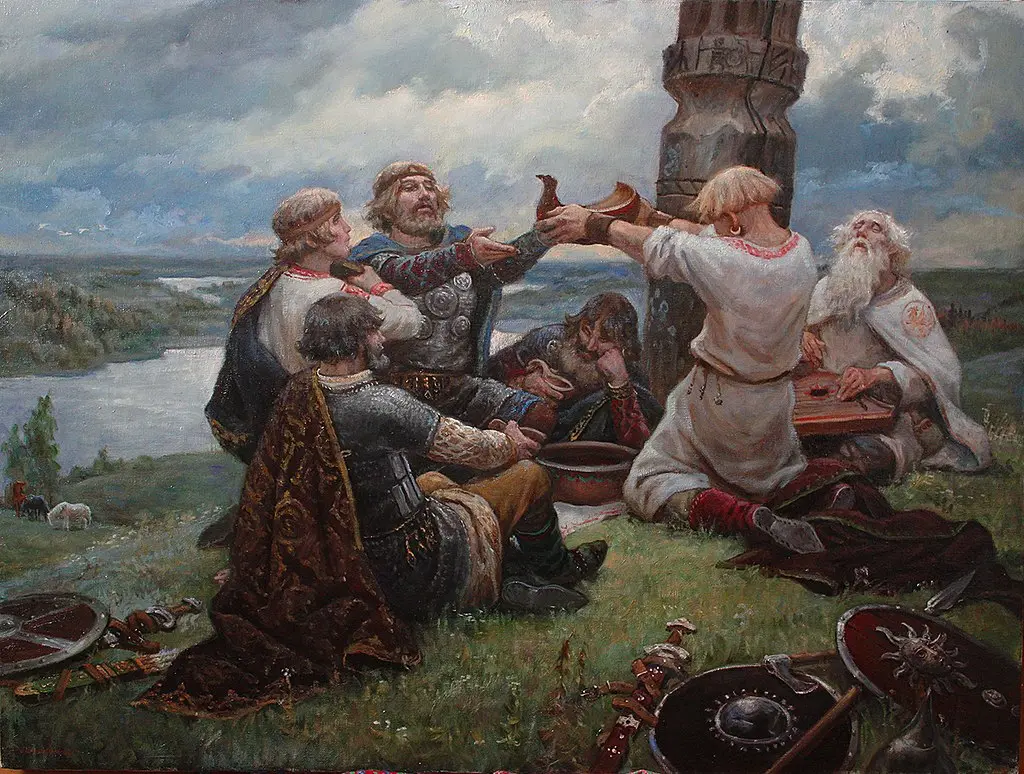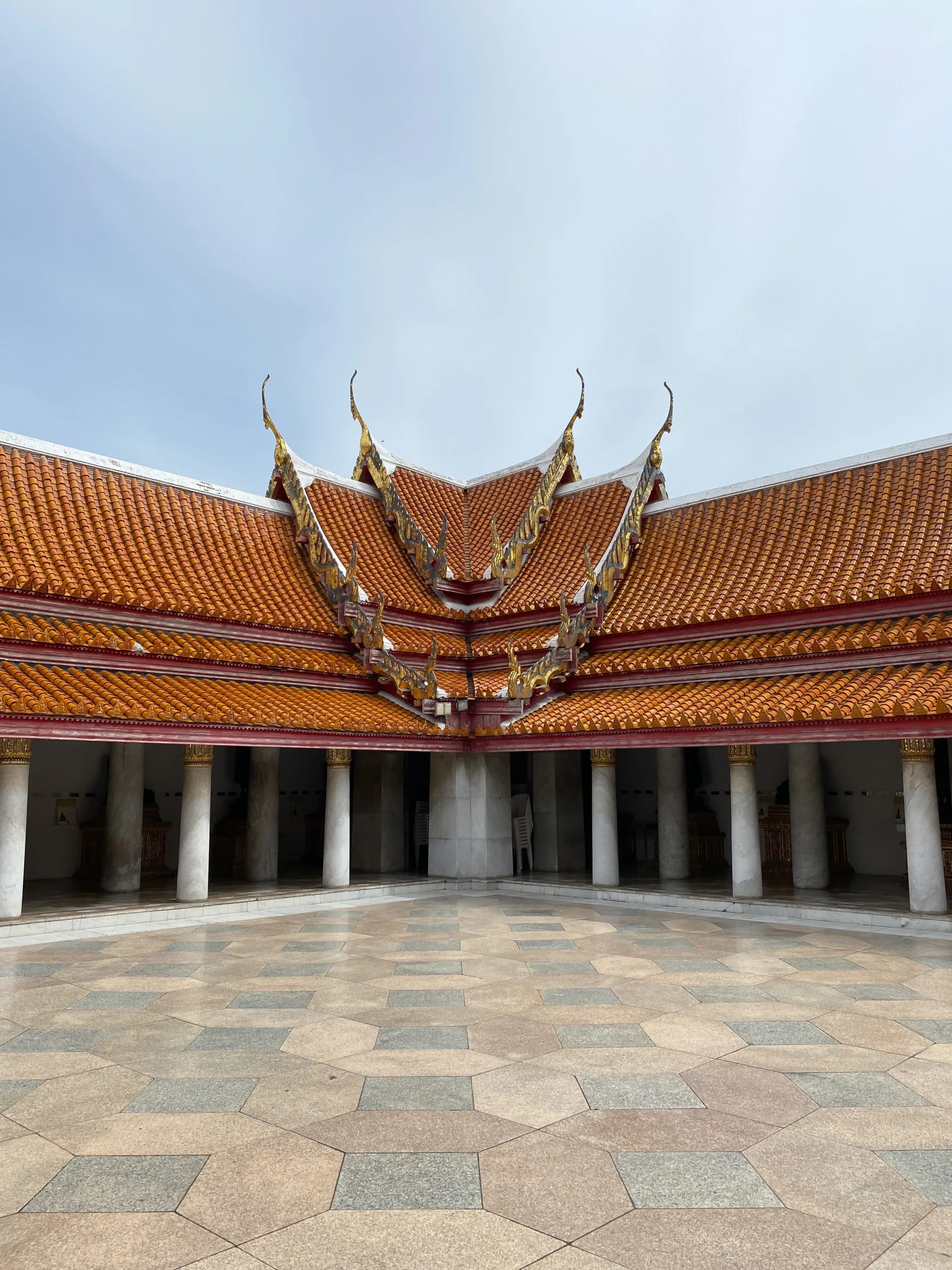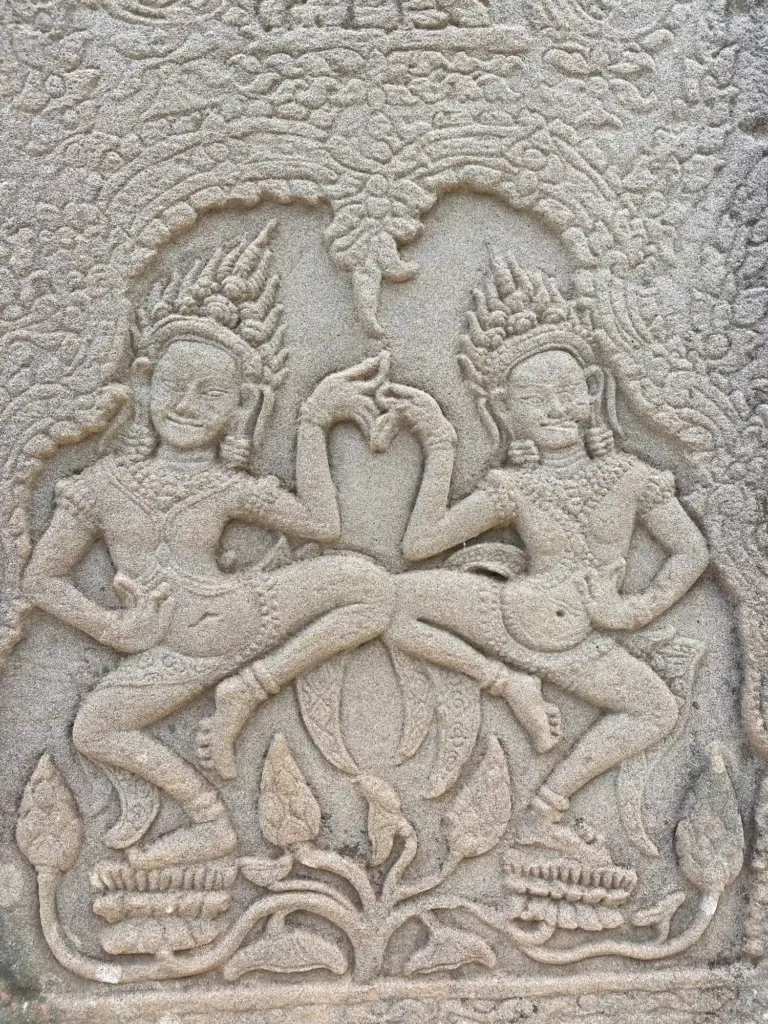Various symbols have played an important role in human culture throughout history and amongst these, two symbols are commonly used for protection and good luck: the Evil Eye and Hamsa Hand.
While they may seem similar at first glance, these symbols have distinct meanings and cultural significance.
In this blog post, we’ll explore the difference between the Evil Eye and Hamsa Hand, their origins, their benefits, and their symbolism in various cultures.
Table of Contents
Toggle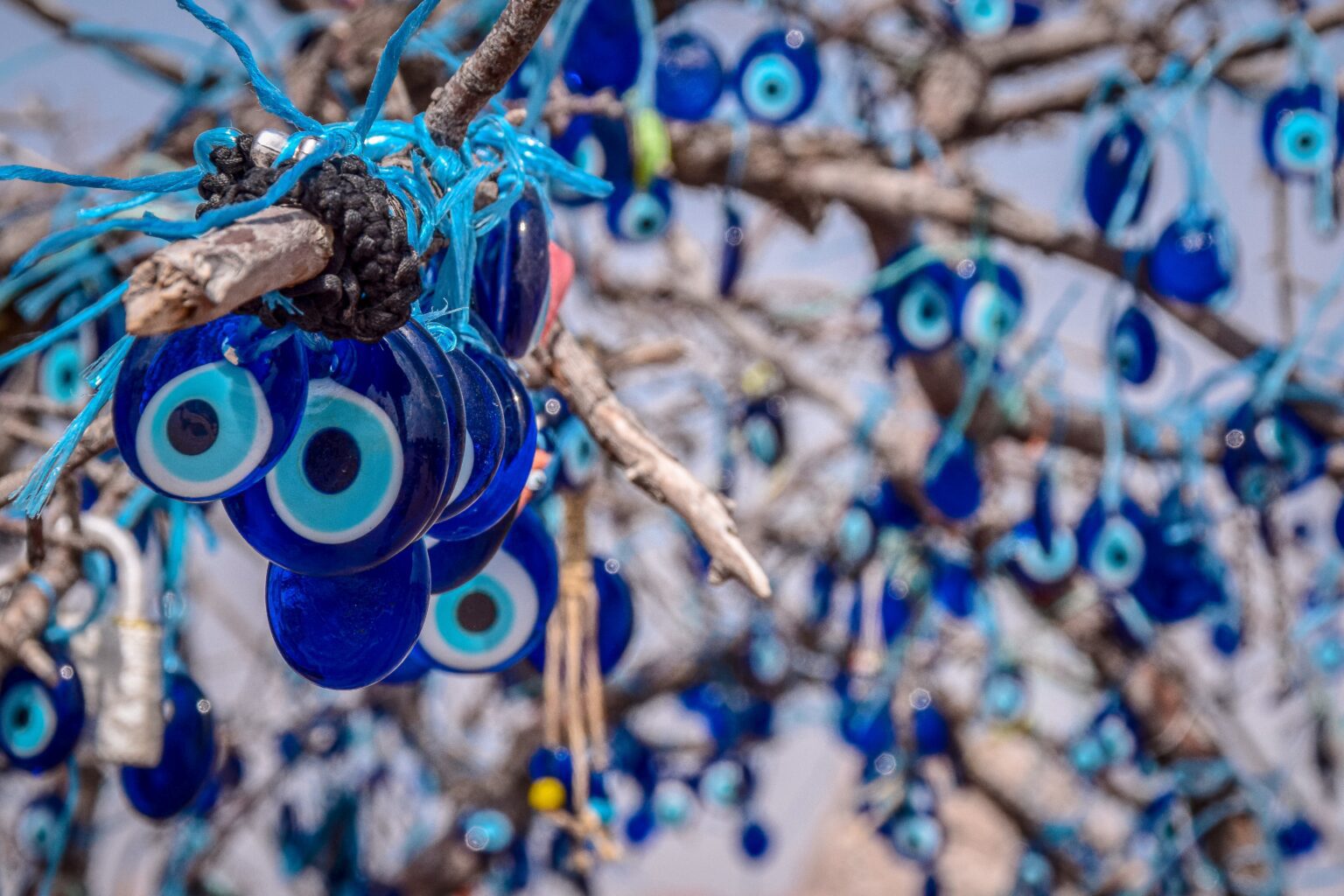
Where did the Evil Eye Originate from?
The belief in the evil eye can be traced back to ancient civilizations as far back as 3000 BCE. The earliest known evidence of the evil eye comes from Sumeria, where it was believed that the eye of the god Enki was capable of bringing good or bad fortune. The ancient Mesopotamians also believed in the power of the evil eye and created amulets to protect against it.
In the 6th century BC, the symbol of the evil eye appeared on Chalcidian drinking vessels, known as ‘eye-cups’, as a form of protective magic. The belief in the evil eye is found in many cultures in the Mediterranean region, as well as Western Asia and Central Asia. I’ve seen them all the way in Mongolia!
Some cultures believe that receiving the evil eye can cause misfortune or injury, while others view it as a supernatural force that reflects a malevolent gaze back upon those who wish harm upon others. It’s easy to get confused as there are so many interpretations of it.
Let’s go over the Evil Eye across the three cultures it is most significant in today:
- In ancient Greece, it is known as “mati”, and the first recorded mention of the evil eye in Greek literature dates back to the 6th century BCE, with the poet Hesiod referring to the curse in his works. The use of eye-shaped amulets for protection against the evil eye has been prevalent in Greek culture for centuries, with archaeological evidence dating back to the 5th century BCE.
- In ancient Rome, the belief in the evil eye, or “malocchio,” was also prevalent, with the Roman writer Pliny the Elder describing it as a powerful curse in his book “Natural History” in the 1st century BCE. The Romans also believed in the power of amulets and talismans for protection against the evil eye, known as “malocchio,” with archaeological evidence of eye-shaped amulets dating back to the 2nd century CE.
- In Turkish culture, the use of the “nazar” amulet for protection against the curse of the evil eye became prevalent in Ottoman Turkish culture in the 16th century and is still widely used in Turkish culture today.
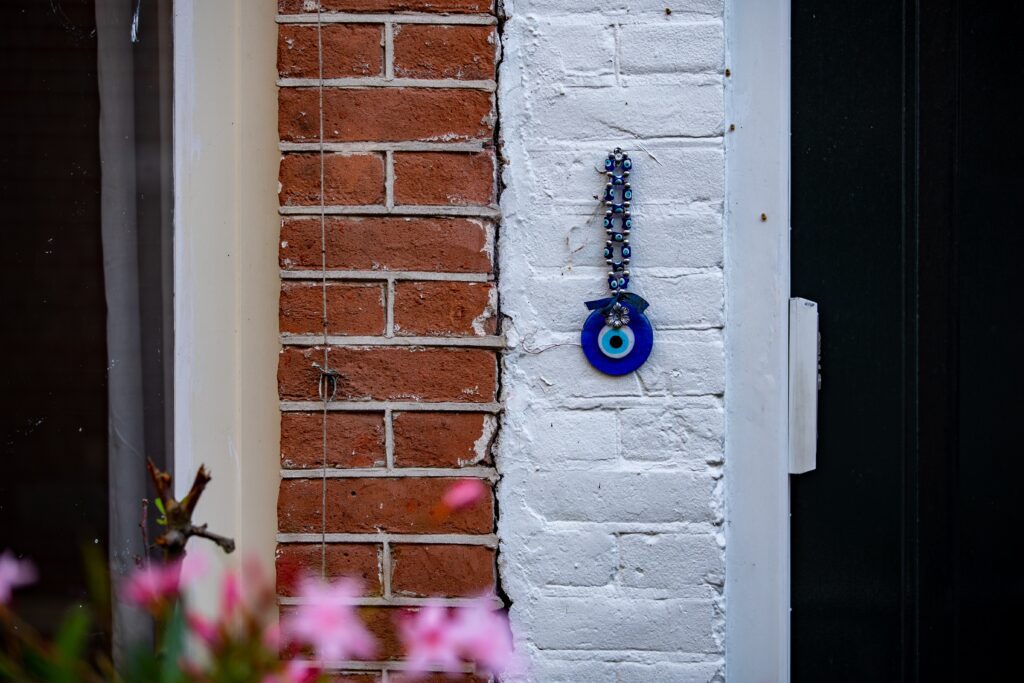
Evil Eye Meanings & Symbolism
To clear things up a bit, the evil eye is both a concept and a physical object.
As a concept, the evil eye refers to the belief that a malevolent stare can cause harm or misfortune to the person who receives it. This belief is present in various cultures and religions and has been around for thousands of years.
As a physical object, the evil eye is often depicted as a blue or green eye-shaped amulet that is used for protection against the curse. The amulet can be made of various materials, such as glass, stone, or metal, and can be worn as jewelry or hung in homes or cars.
The evil eye (object), is believed to provide protection against the curse of the evil eye (concept). The eye shape is a common symbol in many cultures and is often associated with the ability to see and perceive things beyond the physical realm.
The color blue is also a common element in the evil eye symbol, blue is associated with calmness and clarity and it is believed to have the power to repel negative energy. The use of blue in the evil eye symbol is often explained in terms of water, which is believed to have purifying properties and is a representation of life.
Being that it has close ties to Mediterranean countries and their association with the sea, it does make sense!
The symbolism and interpretation of the evil eye may vary depending on the culture and region, but the belief in its power and the need for protection against it is a shared concept among many cultures throughout history.

What are the Other Names for the Evil Eye?
“Nazar” is one of the more well-known names for the evil eye, commonly used in Turkish and Urdu cultures.
The evil eye is also known by various other names, depending on the culture or religion. Here are some of the other names for the evil eye:
- Nazar – Turkish
- Mati – Greek
- Ayin Hara – Hebrew
- Al-ayn – Arabic
- Malocchio – Italian
- Mauvais Oeil – French
- Dristi – Hindu
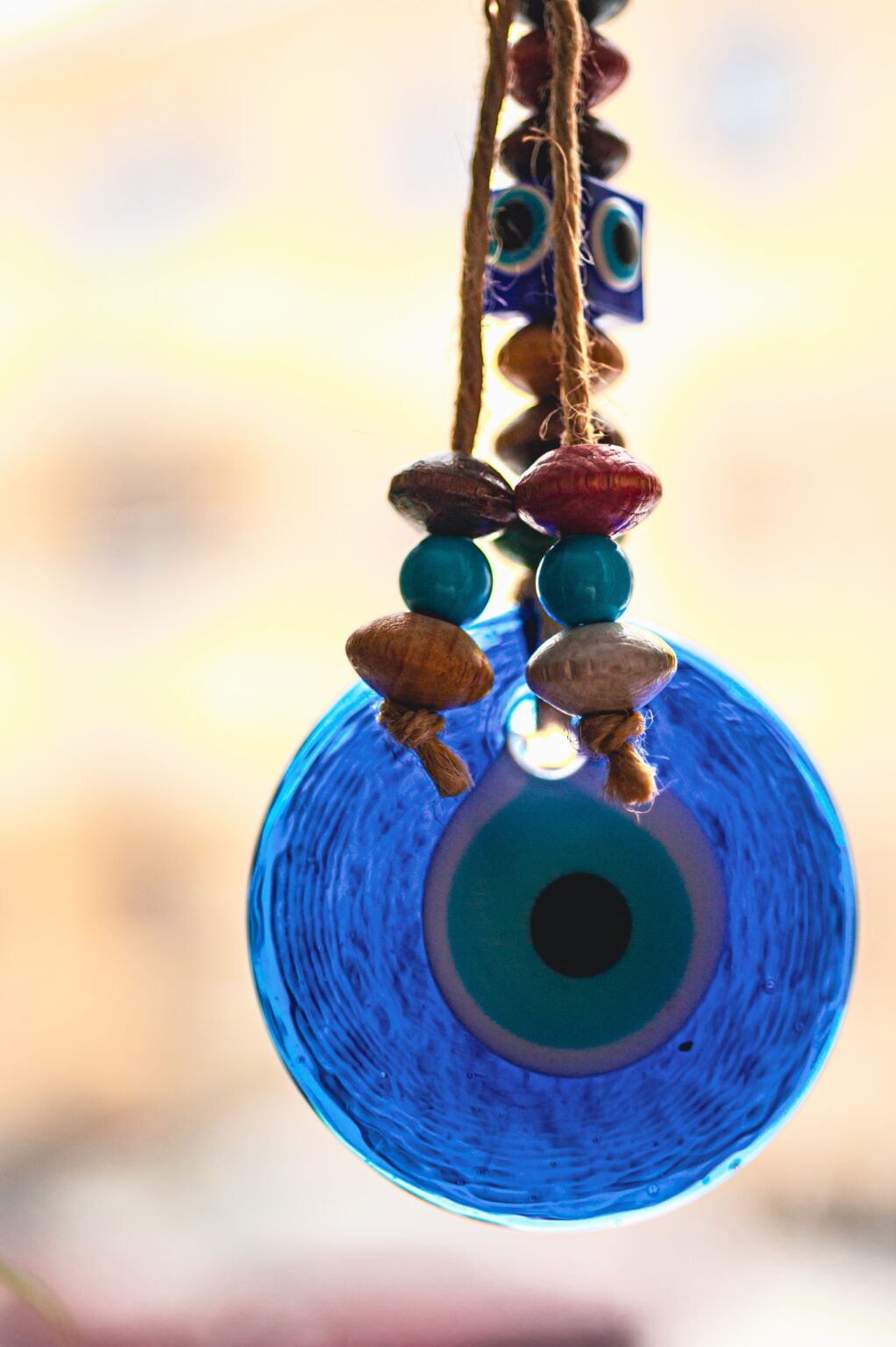
What are the Benefits of Wearing an Evil Eye?
People wear the evil eye or put it as decorations in their home for some of the believed benefits such as:
- Protection: The evil eye is believed to provide protection against the curse of the evil eye by reflecting the gaze of the envious person back to them and neutralizing its negative effects.
- Warding off evil: The evil eye is also believed to have the power to repel negative energy and protect against harm other than that of the evil eye curse.
- Good luck: In some cultures, the evil eye is believed to bring good luck and positive energy.
- Awareness: The evil eye can also serve as a reminder to be mindful of negative energy and jealousy in the world and to protect oneself from it.
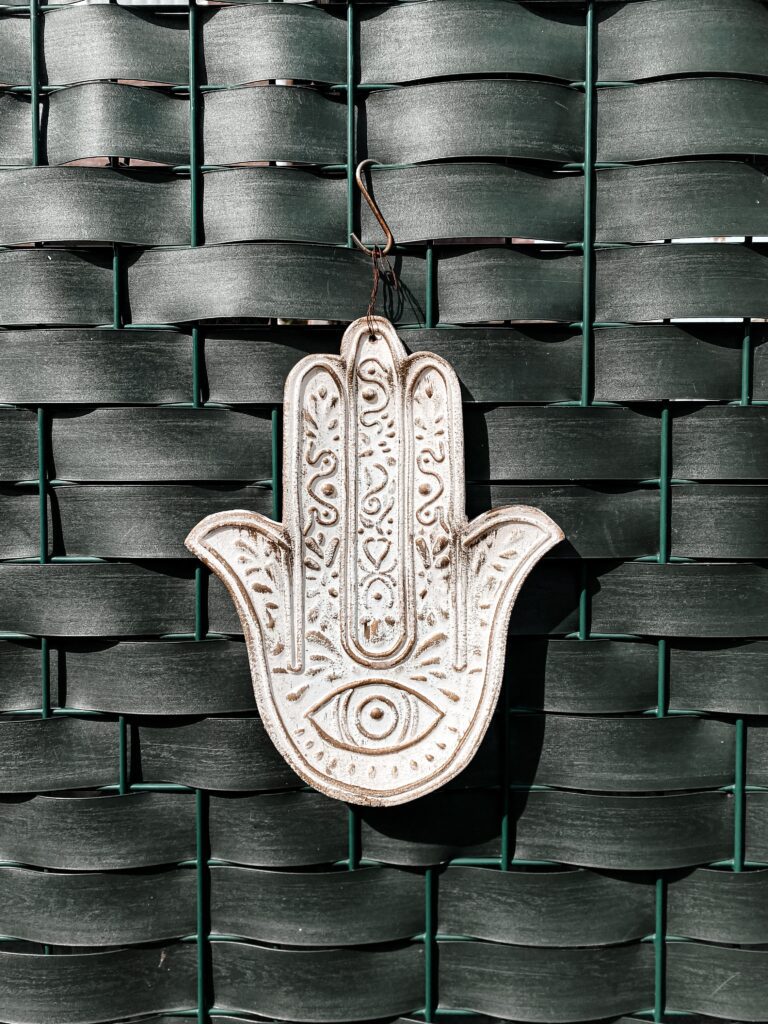
Where did the Hamsa Originate from?
The word “Hamsa” comes from the Arabic word “Khamsah” which means “five”, referring to the five fingers on the hand.
The Hamsa hand has ancient origins and can be traced back to artifacts of the goddess Ishtar in ancient Mesopotamia. It was also seen in Carthage and Phoenician colonies in Spain and Portugal.
One theory links the Hamsa hand to the Mano Pantea, an amulet known to ancient Egyptians as the Two Fingers, while another traces its origins to the hand or vulva of the supreme deity Tanit in Carthage.
The Hamsa hand is also associated with the sky god Horus, who represents the Eye of Horus and the sun and moon as his eyes.
It is a popular symbol in the Middle East, North Africa, and some parts of Asia though I have seen it the most while I was in Israel where it seemed to be present in all three Abrahamic religions.
Here’s the breakdown on it:
- In Jewish culture, the Hamsa hand is known as the “Hand of Miriam” and is believed to have originated in ancient times as a symbol of divine protection against the evil eye. It is also associated with the biblical figure of Miriam, the sister of Moses.
- In Islamic culture, it is known as the “Hand of Fatima,” named after the daughter of the Prophet Muhammad. The Hamsa hand is also popular symbol in Islamic art.
- In Christian culture, the Hamsa is sometimes referred to as the “Hand of Mary” and is associated with the protective and nurturing qualities of the Virgin Mary.
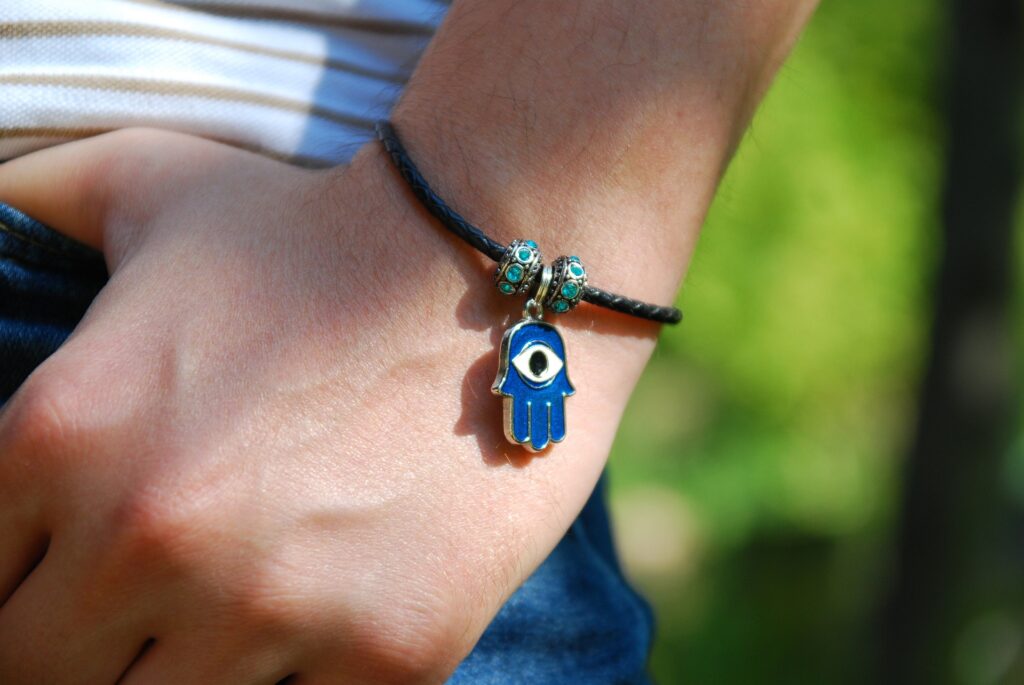
Hamsa Hand Meanings & Symbolism
The Hamsa hand is typically depicted as an open right hand with five fingers, although some variations may include additional symbols.
The number five is significant in many cultures and traditions as it represents the five senses, the five elements, or the five pillars of Islam, among other things. In some traditions, the five fingers on the Hamsa hand are believed to represent the five books of the Torah in Judaism or the Five Pillars of Islam. In Buddhism and Hinduism, the fingers are said to represent the five chakras of the body.
The fingers are often spread apart, and the thumb and pinky finger may be slightly bent. The hand is usually symmetrical, with a similar design on both sides. The symmetrical design of the Hamsa hand represent the idea of duality, such as good and evil, or Yin and Yang.
The Hamsa is a symbol of protection, blessings, power, and strength. Traditionally, it was often made from silver or jet, which were believed to have magical properties.
The Hand can be depicted with fingers spread apart to ward off evil or closed together to bring good luck. It can also be portrayed with fingers pointing up for warding or down for bestowing blessings.
The eye that we see in the Hamsa hand is is commonly used as a talisman to protect against the “evil eye,” the malicious stare (to reflect the gaze back).
The eye in the Hamsa hand is typically depicted in the center of the hand, and it is believed to represent the ability to “see” and ward off evil.
In some cultures, the eye is also believed to represent the all-seeing eye of God, providing protection and guidance to those who carry the Hamsa hand.

What are the Other Names for Hamsa Hand?
The Hamsa hand has different names depending on the cultural and religious context but here are some other names it is known by:
- Hand of Fatima – in Islamic culture
- Hand of Miriam – in Jewish culture
- Hand of Mary – in Christian culture
- Khamsa – This is the Arabic word for “five”
- Hamesh – This is the Hebrew word for “five”
- Hand of God – also another name for the Hamsa
- Woman’s Holy Hand – it is often associated with feminine power
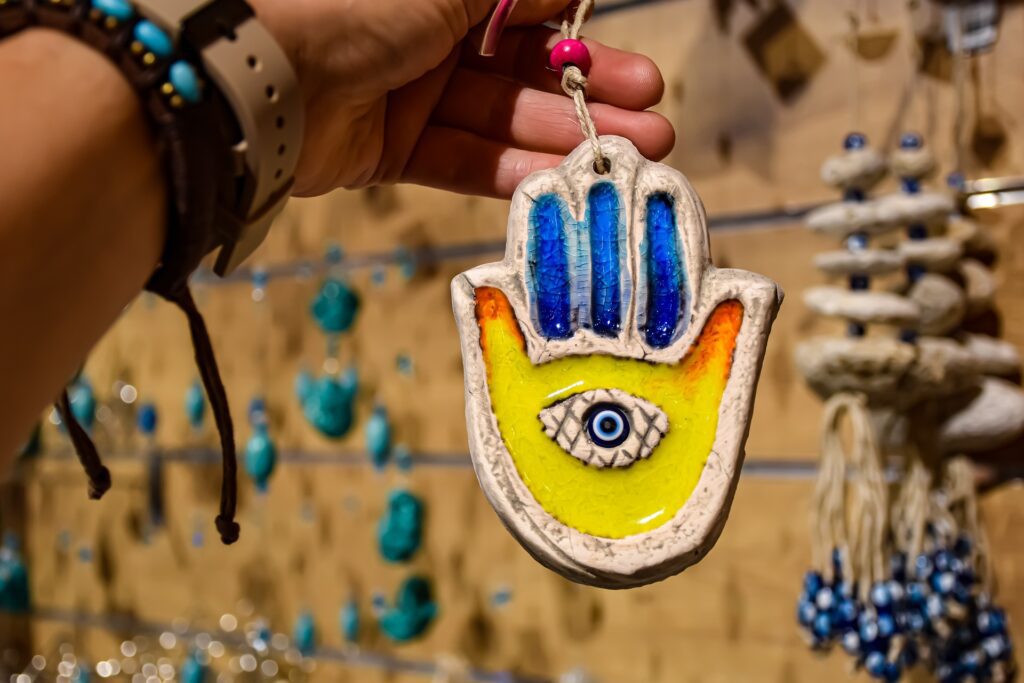
What are the Benefits of Wearing a Hamsa?
The benefits of wearing the hamsa hand or putting it as a decoration sort of encompasses with the evil eye amulet in that they both protect against the “evil eye.” Here are just some of the other benefits associated with the Hamsa:
- Protection: The Hamsa hand is primarily known for its protective properties against the evil eye.
- Good luck: it is also believed to attract good luck and positive energy to the wearer’s life.
- Enhances intuition: Some people believe that it can help develop intuition and psychic abilities.
- Promotes healing: it is sometimes associated with healing due to it being associated with holy women such as Mother Mary.
- Connection with the Divine: More than just a protective charm, the Hamsa serves as a bridge that connects divinity with humanity
What is the Difference Between the Evil Eye and Hamsa Hand?
So to summarize everything that we’ve learned so far, the Evil Eye and Hamsa Hand are both popular and protective symbols but there are just some subtle nuances to them
The Evil Eye is a symbol that is primarily used to protect against the harmful effects of the evil eye, which is believed to be caused by envy. The Evil Eye symbol is typically a blue with a white or light blue iris, often surrounded by a darker blue circle.
On the other hand (ha!), the Hamsa Hand is a symbol that is associated with both protection and divinity. The Hamsa Hand is typically depicted as an open hand with five fingers, often with additional symbols or designs incorporated into the hand. The Hamsa Hand is not only believed to provide protection against the evil eye and negative energy, but it also represents a higher power that watches over and protects humanity. The Hamsa Hand helps connect the physical and spiritual worlds.
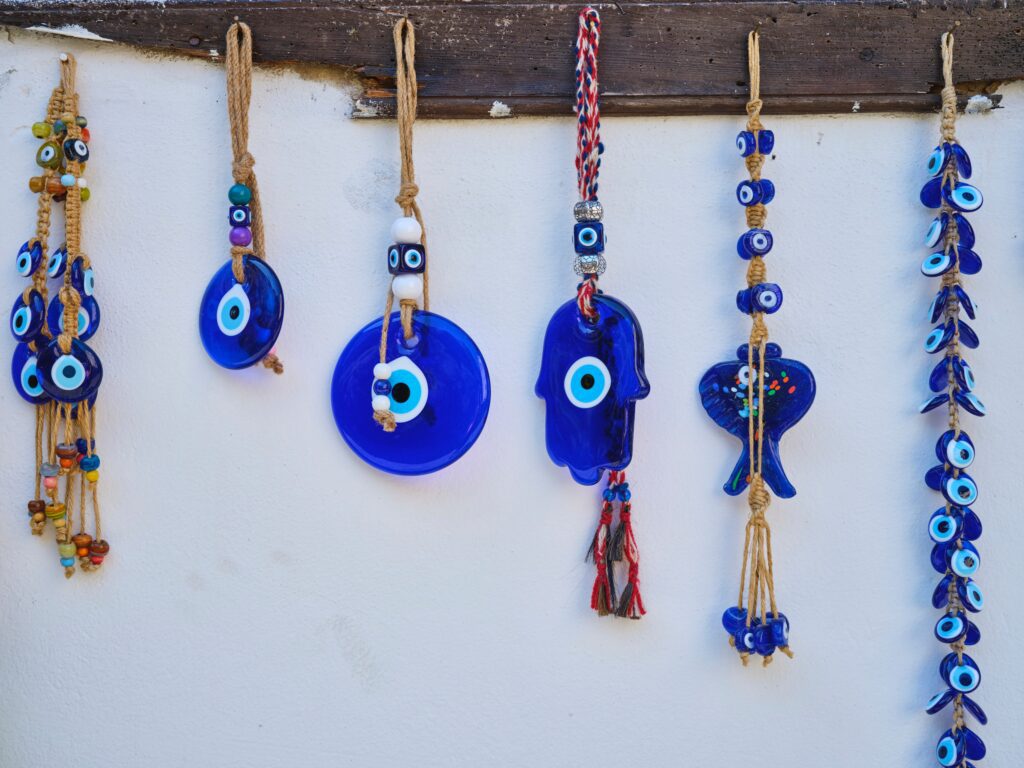
Is it Okay to Wear the Hamsa and Evil Eye Together?
Yes, it is okay to wear the Hamsa and Evil Eye together as they are often used together as protective talismans.
The Hamsa hand is believed to offer general protection against negative energy and the evil eye but carries with it a lot more spiritual significance across the various religions and cultures, while the Evil Eye symbol is specifically meant to protect against the harmful effects of the evil eye.
Wearing them together can provide a stronger level of protection against negative energy, as both symbols complement each other quite well.

